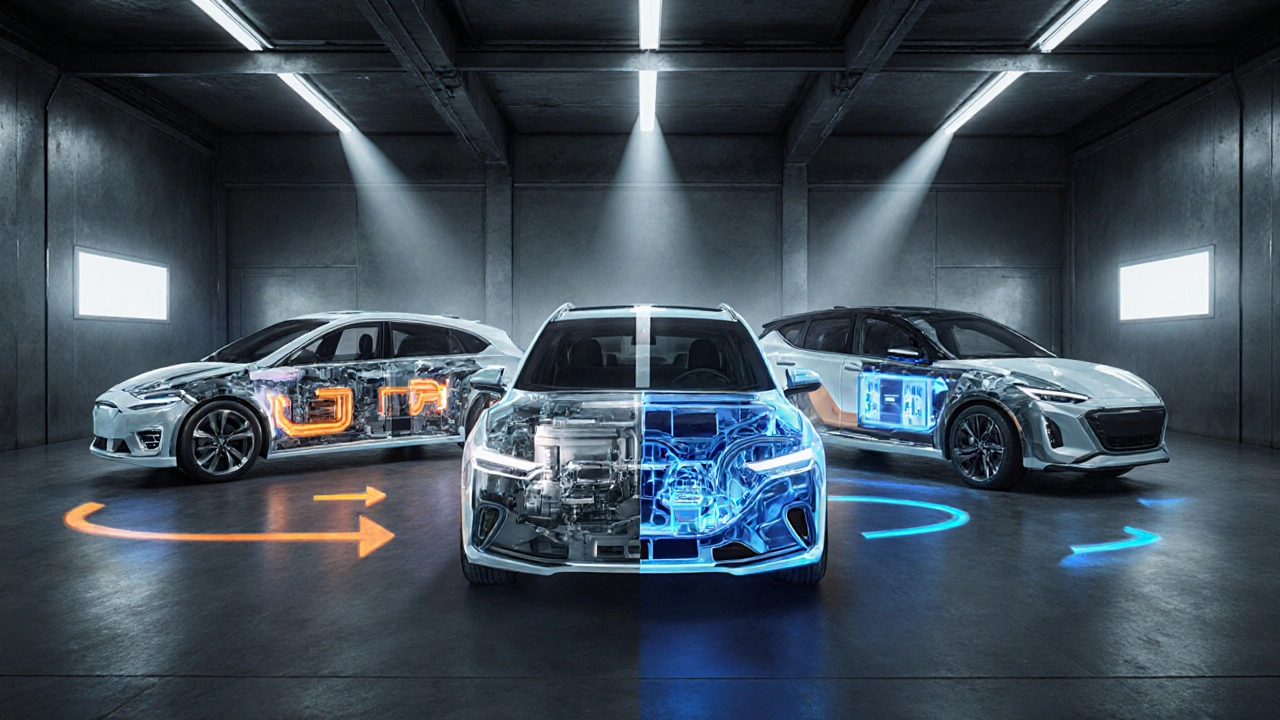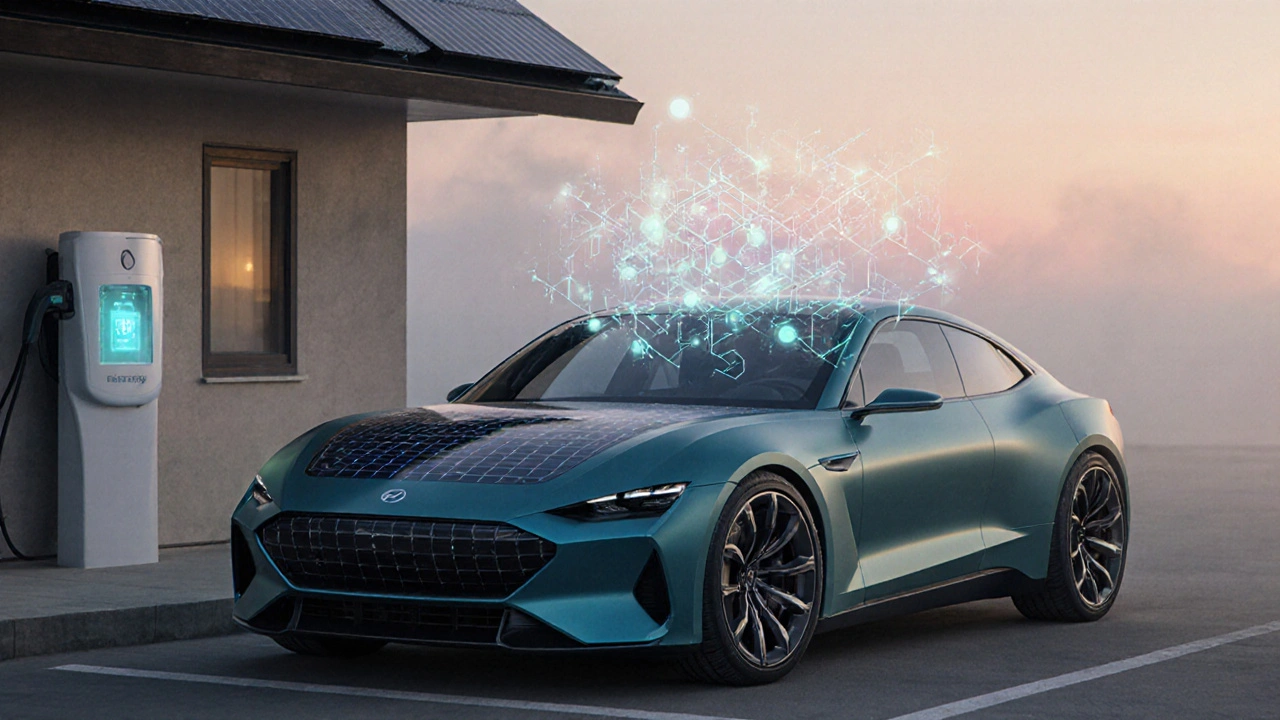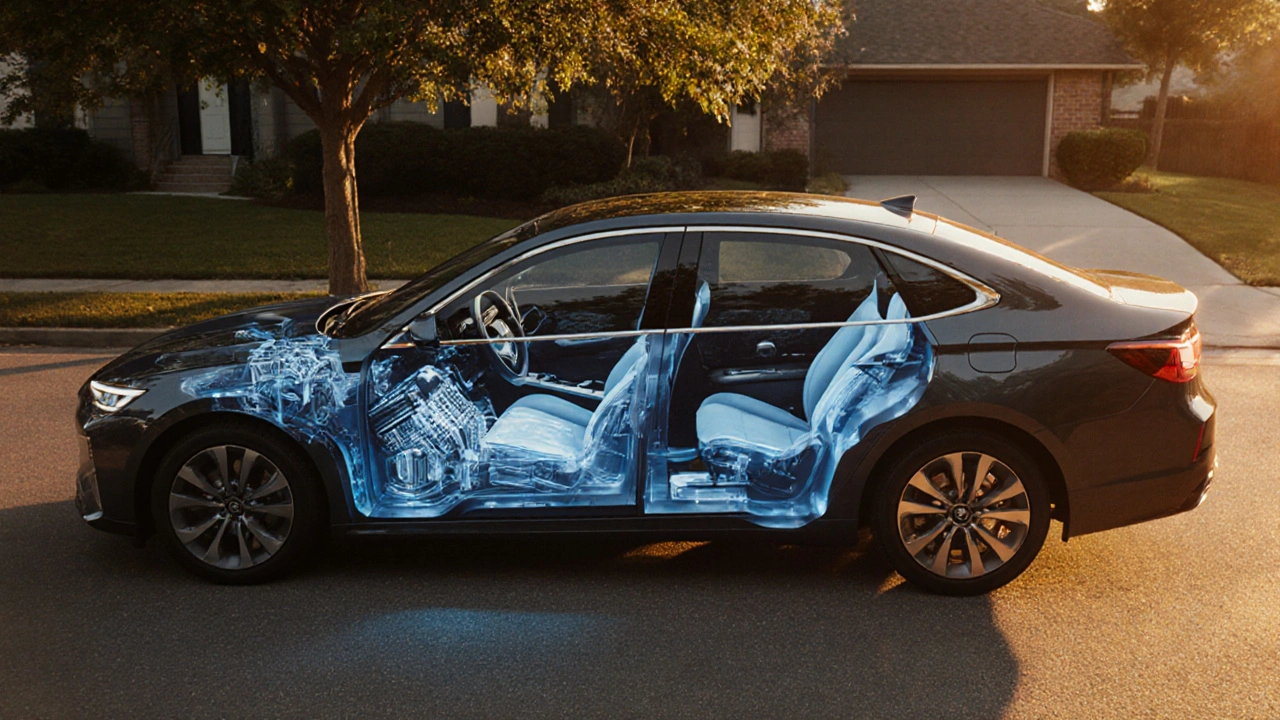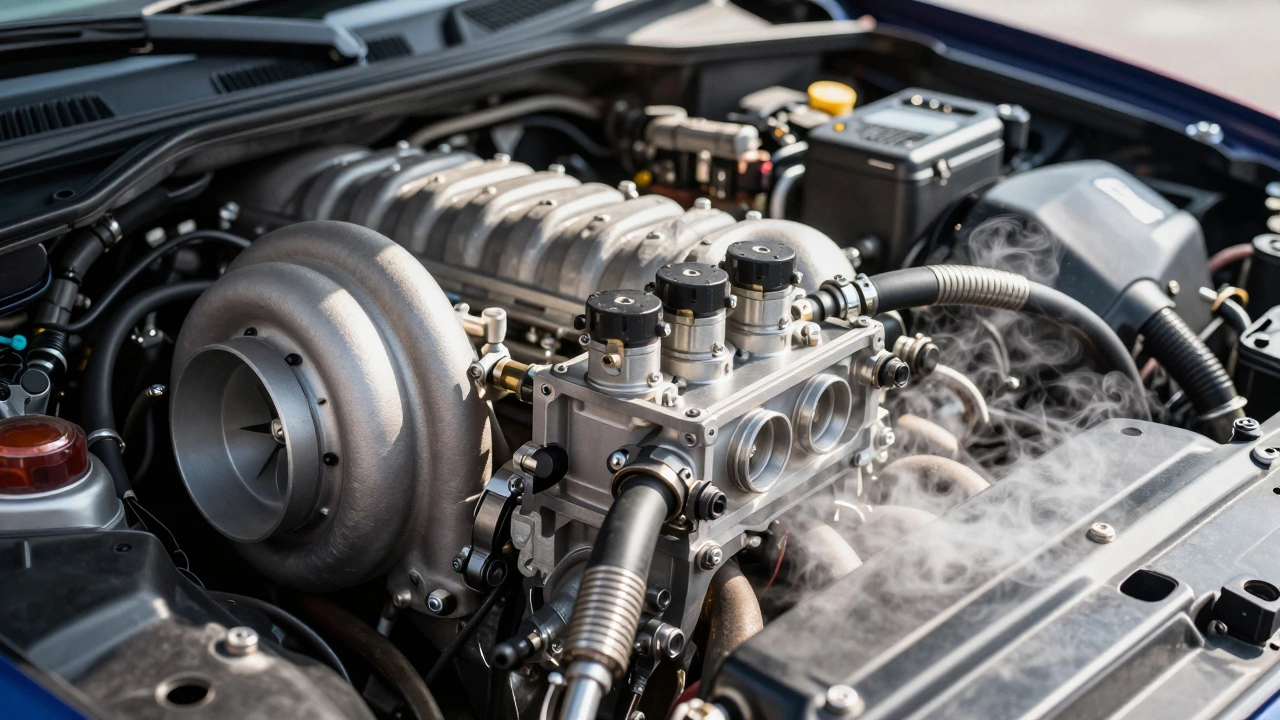Hybrid Fuel Savings Calculator
Your Current Vehicle
Hybrid Vehicle
Your Savings
Switching to a hybrid vehicle would save you:
Hybrid automobiles are reshaping how we drive, offering a middle ground between traditional gasoline engines and fully electric cars. If you’ve ever wondered how these vehicles squeeze extra miles out of every drop of fuel, or why they’re suddenly popping up in more driveways, this guide will break it all down. Expect a clear look at the tech behind hybrids, the real‑world benefits, and practical tips if you’re thinking about buying one.
Quick Summary
- Hybrid automobiles combine an internal combustion engine with an electric motor to improve fuel economy and cut emissions.
- Key components include the battery pack, regenerative braking system, and power‑split transmission.
- Three major hybrid architectures exist: series, parallel, and power‑split (including plug‑in hybrids).
- Buyers should watch battery warranty length, electric‑only range, and total cost of ownership.
- The future points toward solid‑state batteries and tighter grid integration.
Hybrid automobiles deliver a compelling blend of power and efficiency, making them a smart choice for many drivers today.
How Hybrid Automobiles Work
At the heart of every hybrid lies a partnership between a gasoline engine and an electric motor. When the car needs a boost-like merging onto a highway-the engine and motor can work together, delivering extra torque without burning more fuel than necessary.
Hybrid automobile is a vehicle that uses both an internal combustion engine and an electric propulsion system to optimize performance and reduce fuel consumption.
Internal combustion engine converts fuel into mechanical power by igniting a mixture of air and gasoline inside cylinders. It provides the bulk of the energy for high‑speed driving and long trips.
Electric motor converts electrical energy from the battery into rotational force, delivering instant torque. Because electric motors generate maximum torque from zero RPM, they make city driving feel smoother and more responsive.
Battery pack stores electricity generated by the engine and regenerative braking system, typically using lithium‑ion cells. The pack’s capacity (measured in kilowatt‑hours) determines how far a hybrid can travel on electric‑only power.
Regenerative braking captures kinetic energy during deceleration and feeds it back into the battery. This recovers energy that would otherwise be lost as heat, improving overall efficiency.
Major Hybrid Architectures
Not all hybrids are built the same. Understanding the three primary layouts helps you see why some models feel sportier while others aim for maximum fuel savings.
- Series hybrid: The engine runs only to generate electricity, which then powers the motor. Think of it as a small generator on wheels. This design excels in stop‑and‑go traffic because the engine can stay at its most efficient speed.
- Parallel hybrid: Both the engine and motor can drive the wheels directly. The system decides which source is best for the current demand. Many conventional hybrids, like early Toyota models, use this setup.
- Power‑split (or compound) hybrid: A planetary gear set merges power from the engine and motor, allowing seamless switching and even simultaneous use. Toyota’s Hybrid Synergy Drive is a classic example.
Plug‑in hybrids (PHEVs) add a larger battery that you can charge from an outlet, giving an extended electric‑only range before the gasoline engine kicks in.

Real‑World Benefits
Beyond the buzz, hybrids deliver measurable advantages.
- Fuel economy: Most hybrids achieve 30-50% better mileage than comparable gasoline models. For a typical driver covering 12,000miles a year, that translates to roughly 400gallons of gas saved.
- Lower emissions: Reduced fuel burn means fewer CO₂ and NOₓ emissions, helping cities meet air‑quality targets.
- Performance boost: Electric torque fills in low‑rpm gaps, making acceleration feel smoother.
- Tax incentives: Many states and countries offer rebates, reduced registration fees, or access to car‑pool lanes for hybrids.
- Reduced engine wear: The engine often operates at lower loads, extending its lifespan and lowering maintenance costs.
Common Misconceptions and Pitfalls
Even the most enthusiastic drivers sometimes run into myths.
- Range anxiety: While hybrids aren’t designed for long electric‑only trips, their gasoline backup eliminates the fear of being stranded.
- Battery replacement cost: Most manufacturers offer 8‑year/100,000‑mile warranties, and battery prices have dropped 45% over the past five years.
- Higher insurance premiums: In practice, insurance rates for hybrids are comparable to gasoline cars of similar value.
- Complexity means unreliability: Modern hybrids use proven components; reliability ratings from J.D. Power show hybrids often outperform their gasoline counterparts.
Buying Guide: What to Look For
When you’re ready to shop, focus on these criteria to get the most value.
- Battery warranty: Look for at least an 8‑year/100,000‑mile coverage. Longer warranties indicate confidence from the maker.
- Electric‑only range (for PHEVs): A minimum of 20miles lets most commuters drive daily errands without touching the gas tank.
- Fuel‑economy rating: EPA figures are a good baseline, but real‑world tests from sources like Consumer Reports give a clearer picture.
- Total cost of ownership: Factor in purchase price, fuel savings, maintenance, and possible tax credits.
- Drive‑mode options: Some hybrids let you lock into electric‑only, sport, or eco modes, giving flexibility for different trips.

Future Trends Shaping Hybrid Vehicles
The hybrid market isn’t static. A few emerging technologies promise to push efficiency even higher.
- Solid‑state batteries: Offering higher energy density and faster charging, they could boost electric‑only range beyond 40miles for PHEVs.
- Integrated solar roofs: Early adopters report a 5‑10% increase in battery charge on sunny days, enough to power auxiliary systems.
- Vehicle‑to‑grid (V2G) capability: Future hybrids may feed excess electricity back to the grid, turning your car into a small power plant.
- Advanced AI energy management: Machine‑learning algorithms can predict driving patterns and pre‑condition the battery for optimal performance.
Hybrid vs Conventional vs Fully Electric: Quick Comparison
| Feature | Hybrid Automobile | Conventional Gasoline | Fully Electric Vehicle (EV) |
|---|---|---|---|
| Primary energy source | Combination of gasoline and electricity | Gasoline only | Electricity only |
| Typical city MPG (or MPGe) | 45‑55MPG (≈120‑150MPGe) | 25‑30MPG | 100‑120MPGe |
| Electric‑only range | 0‑50miles (PHEV) | 0miles | 150‑300miles |
| Refueling time | 5‑10min (fuel) + optional plug‑in | 5‑10min | 30‑60min (fast charger) |
| Up‑front cost (US$) | $30,000‑$45,000 | $20,000‑$35,000 | $35,000‑$55,000 |
| Maintenance | Moderate (fewer oil changes) | Higher (regular oil, transmission services) | Low (no oil, fewer moving parts) |
| CO₂ emissions (g/mi) | ≈150‑200 | ≈350‑400 | ≈0 (well‑to‑wheel depends on electricity source) |
Frequently Asked Questions
How far can a hybrid drive on electricity alone?
Standard (non‑plug‑in) hybrids typically rely on the gasoline engine for most cruising, but they can run in electric‑only mode for short bursts-usually up to 2‑3 miles at low speeds. Plug‑in hybrids, on the other hand, often provide 20‑50 miles of pure electric range before the engine starts.
Do hybrid batteries need frequent replacement?
Modern lithium‑ion packs are built to last. Most manufacturers back them with an 8‑year/100,000‑mile warranty, and many owners report batteries running well beyond that without major loss of capacity.
Can I charge a hybrid at home?
Only plug‑in hybrids support external charging. You’ll need a Level2 (240V) home charger for full-speed charging, though a regular 120V outlet will work slower.
Are hybrids more expensive to insure?
Insurance premiums are generally similar to comparable gasoline models. The slight price lift for some hybrids is often offset by lower repair costs due to reduced engine wear.
What maintenance tasks can I skip with a hybrid?
You can often extend oil‑change intervals because the engine runs at lower RPMs. Brake pad wear is also reduced thanks to regenerative braking, meaning fewer replacements.
Hybrid automobiles are no longer a niche experiment-they’re a practical, eco‑friendly choice for everyday drivers. By understanding how the system works, weighing the benefits, and knowing what to look for when shopping, you can make a confident decision that saves money and helps the planet.





